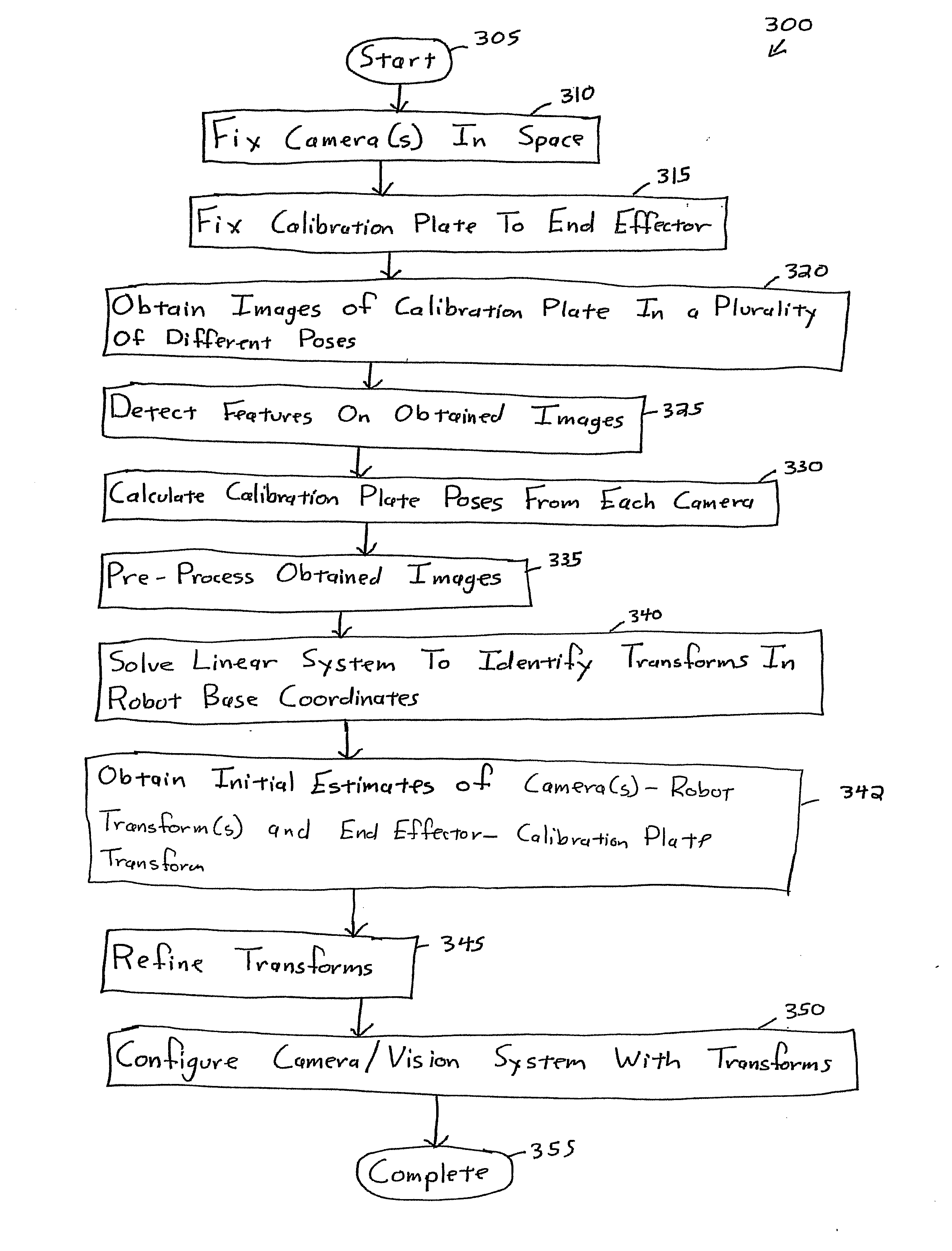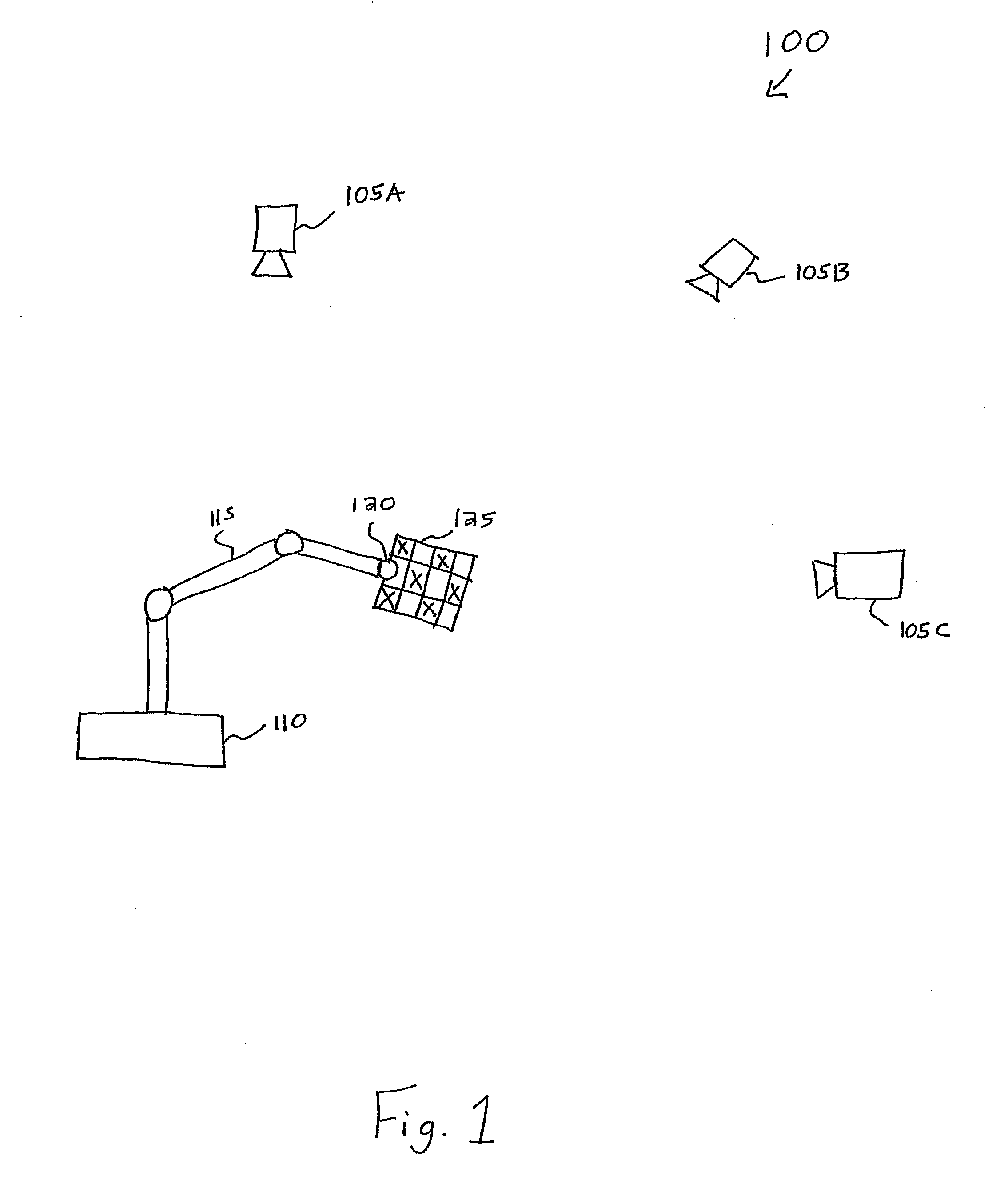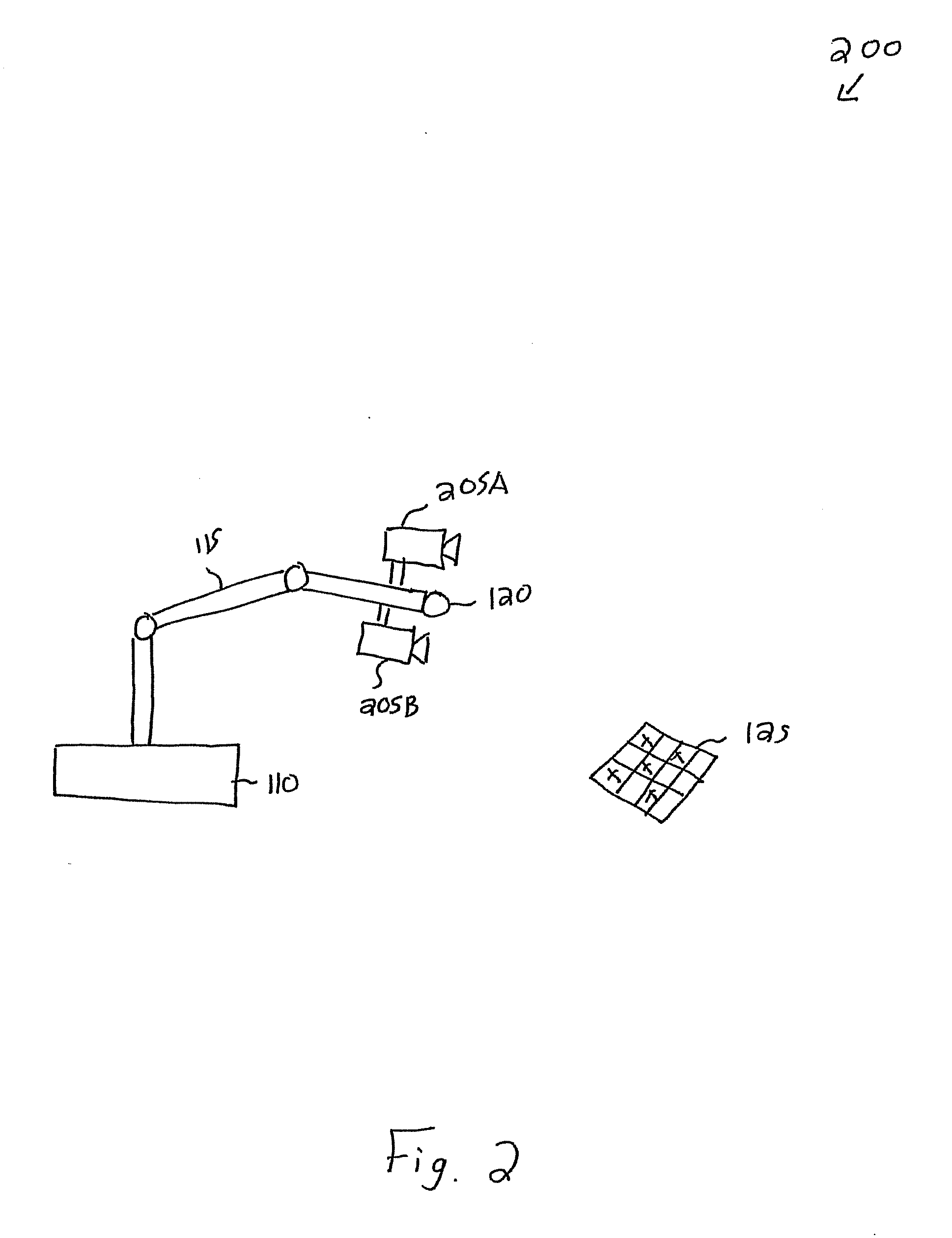System and method for robust calibration between a machine vision system and a robot
a machine vision system and robot technology, applied in the field of machine vision system calibration, can solve the problems of inability of end effectors to grasp workpieces, inability to accurately measure workpieces, inability to accurately assemble workpieces,
- Summary
- Abstract
- Description
- Claims
- Application Information
AI Technical Summary
Benefits of technology
Problems solved by technology
Method used
Image
Examples
Embodiment Construction
[0022]Illustrative embodiments of the present invention provide a system and method for accurately refining hand-eye calibration while illustratively imposing a constraint that there is a unique 6 DOF (degree of freedom) transform between each camera and the end effector for the moving camera case or imposing that there is a unique 6 DOF transform between each camera and the robot base for the stationary camera case. It should be noted that in alternative embodiment of the present invention, a differing number of degrees of freedom may be utilized. As such, the description of 6 DOF should be taken as exemplary only. Further, illustrative embodiments of the present invention illustratively enforce a constraint that there is a unique 6 DOF transform between the robot coordinate system and the calibration plate for the moving camera case. Alternatively, for the stationary camera case, illustrative embodiments of the present invention enforce a constraint that there is a unique 6 DOF tr...
PUM
 Login to View More
Login to View More Abstract
Description
Claims
Application Information
 Login to View More
Login to View More - R&D
- Intellectual Property
- Life Sciences
- Materials
- Tech Scout
- Unparalleled Data Quality
- Higher Quality Content
- 60% Fewer Hallucinations
Browse by: Latest US Patents, China's latest patents, Technical Efficacy Thesaurus, Application Domain, Technology Topic, Popular Technical Reports.
© 2025 PatSnap. All rights reserved.Legal|Privacy policy|Modern Slavery Act Transparency Statement|Sitemap|About US| Contact US: help@patsnap.com



